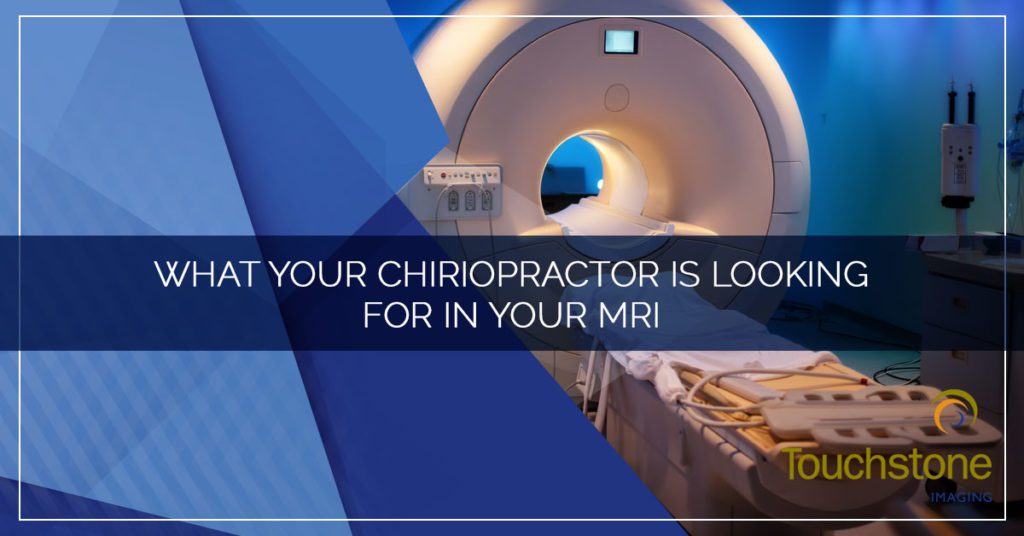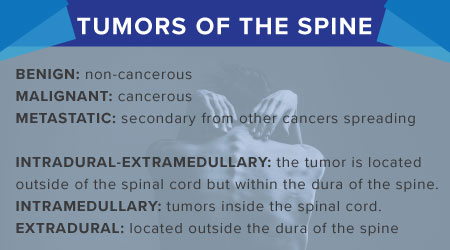Chiropractic care is a specialty care that focuses on optimizing health through the manipulation and alignment of the spine and joints. Chiropractors primarily use hands-on assessment and x-rays to evaluate your spine. If both of these evaluations appear to be normal, but your neck or back pain persists, your chiropractor may refer you for an MRI to get a closer look. In today’s post, we will discuss a few things your chiropractor may be looking for in your spinal MRI and how Touchstone Imaging Centers can help.
At Touchstone Imaging Centers, we offer MRI services among other diagnostic radiological services. We offer a wide range of imaging services that may be ordered by chiropractors, primary care providers, specialists, or even screening exams for your own information. Whatever the reason for your medical imaging test, visit us online to find a location near you.
MRI For Chiropractic Care
Generally, a chiropractor does not order or refer you for an MRI and is able to complete a thorough enough assessment without one. However, there are certain circumstances in which an MRI may be recommended. Here are just a few reasons your chiropractor may refer you for an MRI.
1. Rule out a fracture.
Manual assessment is a great tool for evaluating herniated discs and misalignments of the spine, but some fractures are not easy to feel. A spinal MRI can show small fractures of the bone or vertebral compression fractures. An MRI is able to identify hairline or stress fractures caused by osteoporosis or other conditions. Identifying spinal fractures is important not only to effectively treating and reducing pain, but to preventing further damage, and it is well understood that one vertebral fracture increases the risk of other vertebral fractures 5-fold.
2. Assess for tumors.
Spinal tumors are often overlooked because the symptoms they cause are vague and mimic other causes. Additionally, spinal tumors are rare, so they are not the first thing that is suspected when back pain or nerve damage is evident.
Spinal MRIs are able to identify tumors on, in, or around the spinal column. Your chiropractor may be more inclined than other providers to order an MRI to look for tumors, even when they can’t be felt because tumors may make spinal adjustments more difficult or manipulations less effective.
3. Look for dislocations.
Chiropractors often treat sports injuries in addition to car accident injuries, workplace injuries, and routine chiropractic care. In some cases, upon manual assessment, your chiropractor may suspect a dislocation that requires further assessment. Additionally, once a dislocation is subluxated, an MRI can be useful in diagnosing nerve and musculoskeletal damage that resulted. Common dislocations your chiropractor may be looking for include:
- Cervical subluxation (common in car accidents with sudden deceleration)
- Shoulder and acromioclavicular dislocations
- Knee and hip dislocations
When joints are dislocated, it may cause swelling of the surrounding tissues or pinching of nerves. Your chiropractor will be evaluating both the bone and the surrounding soft tissue on the MRI scans.
4. Spinal stenosis.
The spinal cord is the structure that supports the entire body and allows for freedom of movement. Perhaps one of the important jobs of the spinal column is that it provides a passageway for the nerves to begin at the skull and travel to the extremities. Spinal stenosis is a common condition that causes the narrowing of the spinal canal. The problem with this narrowing is that it can compress the nerves that lie within. This compression, or pinching, of nerves can cause all sorts of symptoms including weakness, numbness, tingling, and pain in the extremities. Your chiropractor may suspect spinal stenosis if you display symptoms of pinched nerves that are not relieved with adjustment or there is no misalignment identified.
5. Assess musculoskeletal injuries.
Chiropractors use a variety of treatments including manual adjustments, massage, and physical therapy to help clients recover from a sports injury, car accidents, workplace injuries, and sprains and strains from falls or overuse. To get a better idea of what they are working with, your chiropractor may perform an x-ray in their office or refer you to an outpatient radiology clinic for an x-ray or MRI.
6. Disc degeneration.
Vertebral degenerative disc disease is the change that may take place in the spine over time. The spinal discs are made up of a soft inner core and a tough outer wall. As we age, the discs may lose hydration and dry and crack. This results in less padding between the vertebrae and causes pain. Sometimes, the discs may bulge or slip out of place, slightly, putting pressure on nearby nerves. An MRI can reveal the small changes, including the microscopic cracks and thinning of structures.
Trust Touchstone Imaging For Your Chiropractic Radiology Needs
Your chiropractor will use a variety of diagnostic tools including manual manipulation and medical imaging to assess the cause of your pain and to formulate the best treatment plan. Touchstone Imaging Centers are outpatient radiology centers located in Texas, Colorado, Oklahoma, Nebraska, Florida, and Arkansas offering x-rays, MRIs and more. Whether you are referred by your primary care provider, chiropractor, or self-referred for a screening mammogram, our team of radiology experts is here to meet your needs. Visit us online to find a Touchstone Imaging location near you and schedule your chiropractic MRI today.



